The common wisdom in project work is that you have two choices between three options: a project can be good, fast, or cheap. It can never be all three.
- Good, fast projects are usually expensive.
- Good, cheap projects are usually slow.
- Fast, cheap projects are usually low quality.

Each combination of two can be a viable business model. Let’s look at a few examples.
The 6-Day Revenue Roadmap
A free 6-day email course for design freelancers and agency owners who need revenue fast—without a funnel, large audience, or fancy pitch deck.
Get Lesson #1 NowGood + Fast
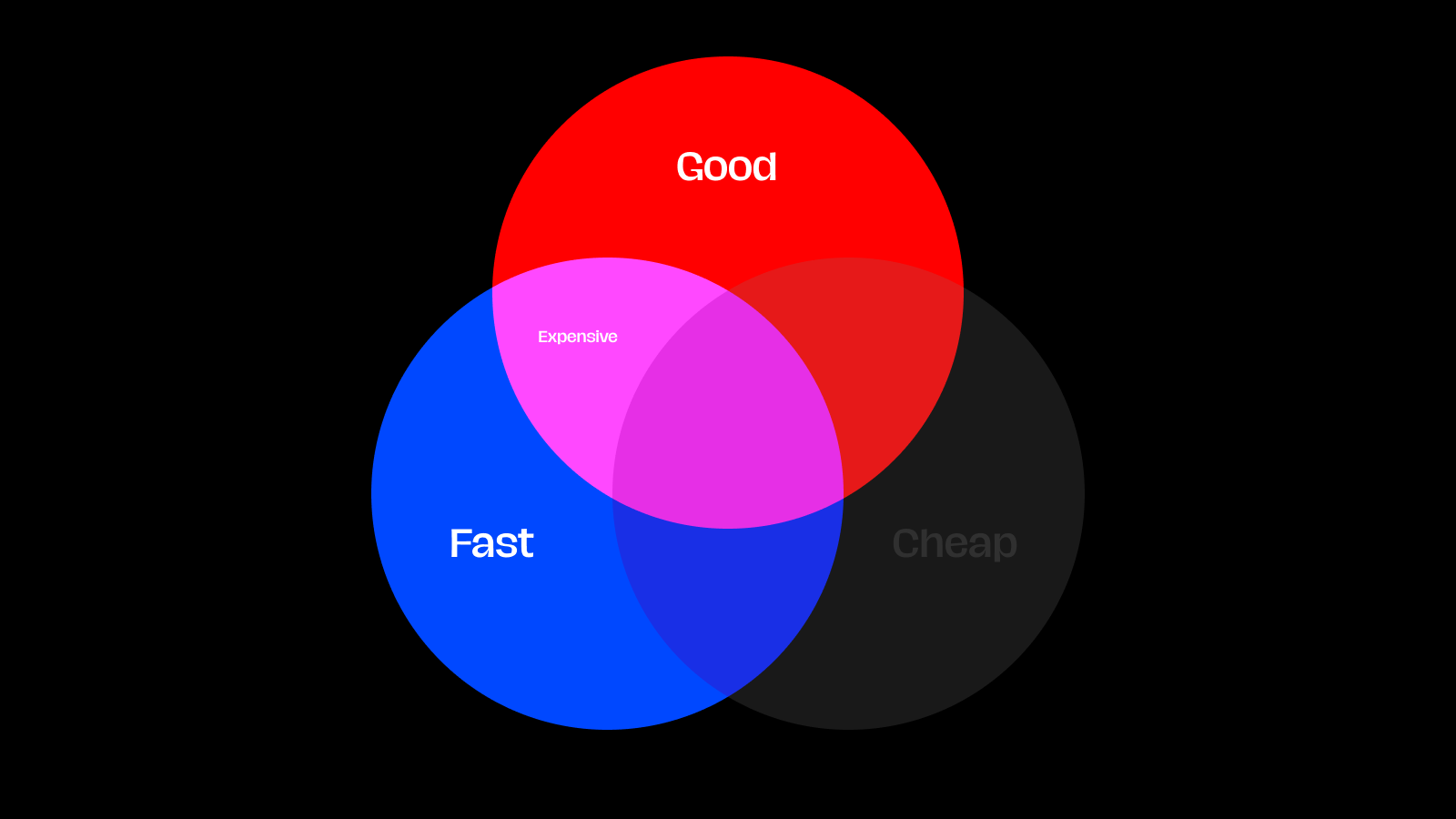
Doing good and fast work is the typical standard of excellence for most businesses, because it’s the most straightforward and understood path to making good money. This is true across most industries. When you hire a plumber, if they do good work fast, that’s usually considered a good hire. The same is true for agencies and freelancers.
From a customer perspective, knowing who sells this combo is tricky. Portfolios can cue you into whether or not work is good. But how can you tell whether the person or team works fast? Very few people include the timeframes of their projects in their portfolios (though I’d love to see more of that). And, even if they did, it’d be pretty easy to lie about. This explains why a lot of happy customers find their service providers through word of mouth.
Types of services you can provide if you want to have a reputation for being a good and fast (and, subsequently, expensive) designer/firm:
- An emergency repair service, like fixing botched branding or design projects from other firms
- A very specialized service that you can deliver quickly, like customized assessments
- A luxury offering, like printing on diamonds (!) or making apps for celebrities
Good + Cheap
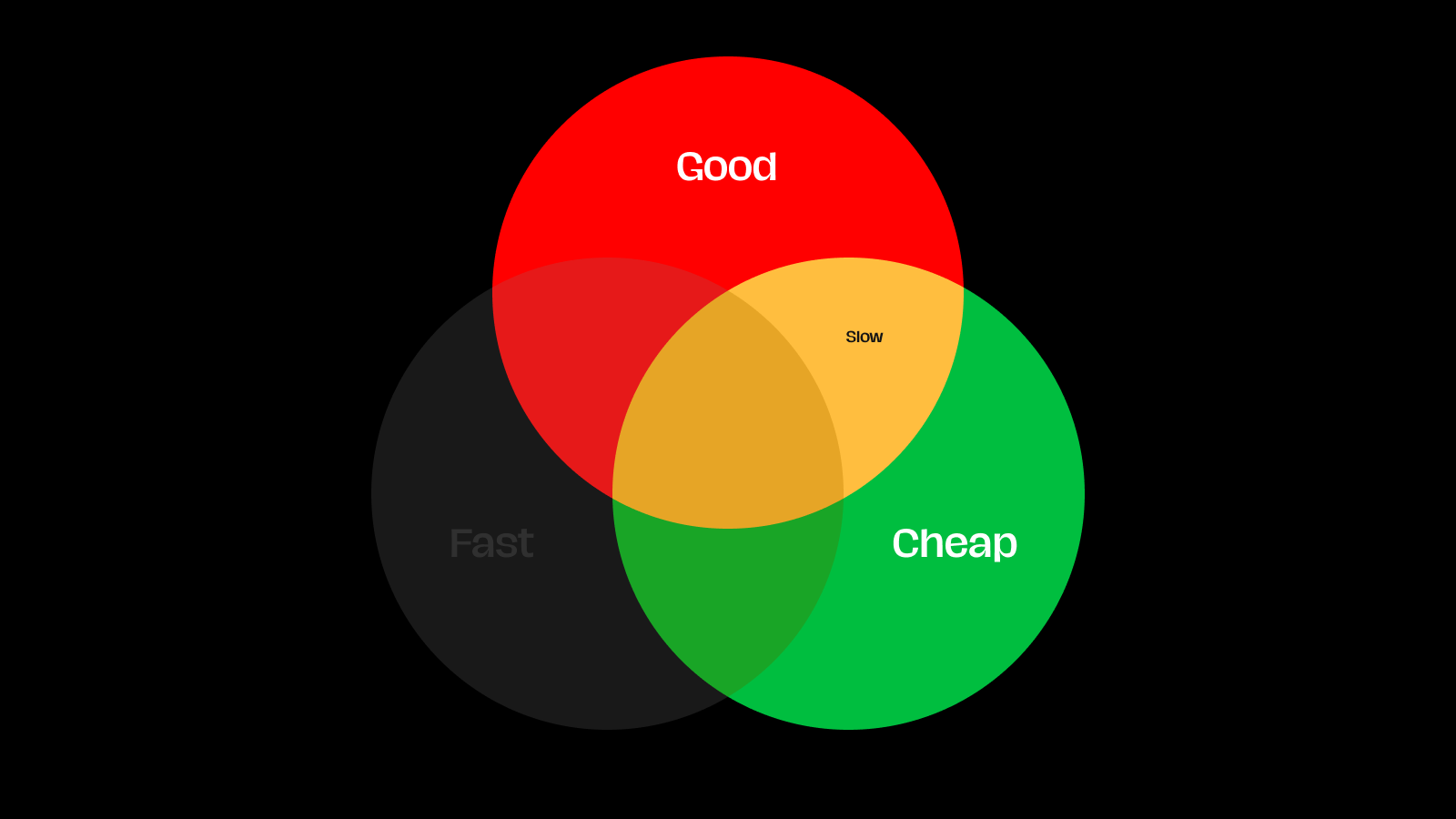
If a customer wants good work but wants it to be cheap, they can probably expect it to be slow. Conceivably, good service providers are busy with many customers, and the most common way to incentivize them to work with you is to pay a lot. Those not willing to pay a lot are usually relegated to waiting.
In Philly where I live, one of my favorite restaurants is Dim Sum Garden. Their specialty is delicious soup dumplings, and they’re very reasonably priced. They don’t take reservations, so almost every time I go, there’s a line out the door. I once waited 2 hours to be seated, and it was worth every minute.
Fast + Cheap
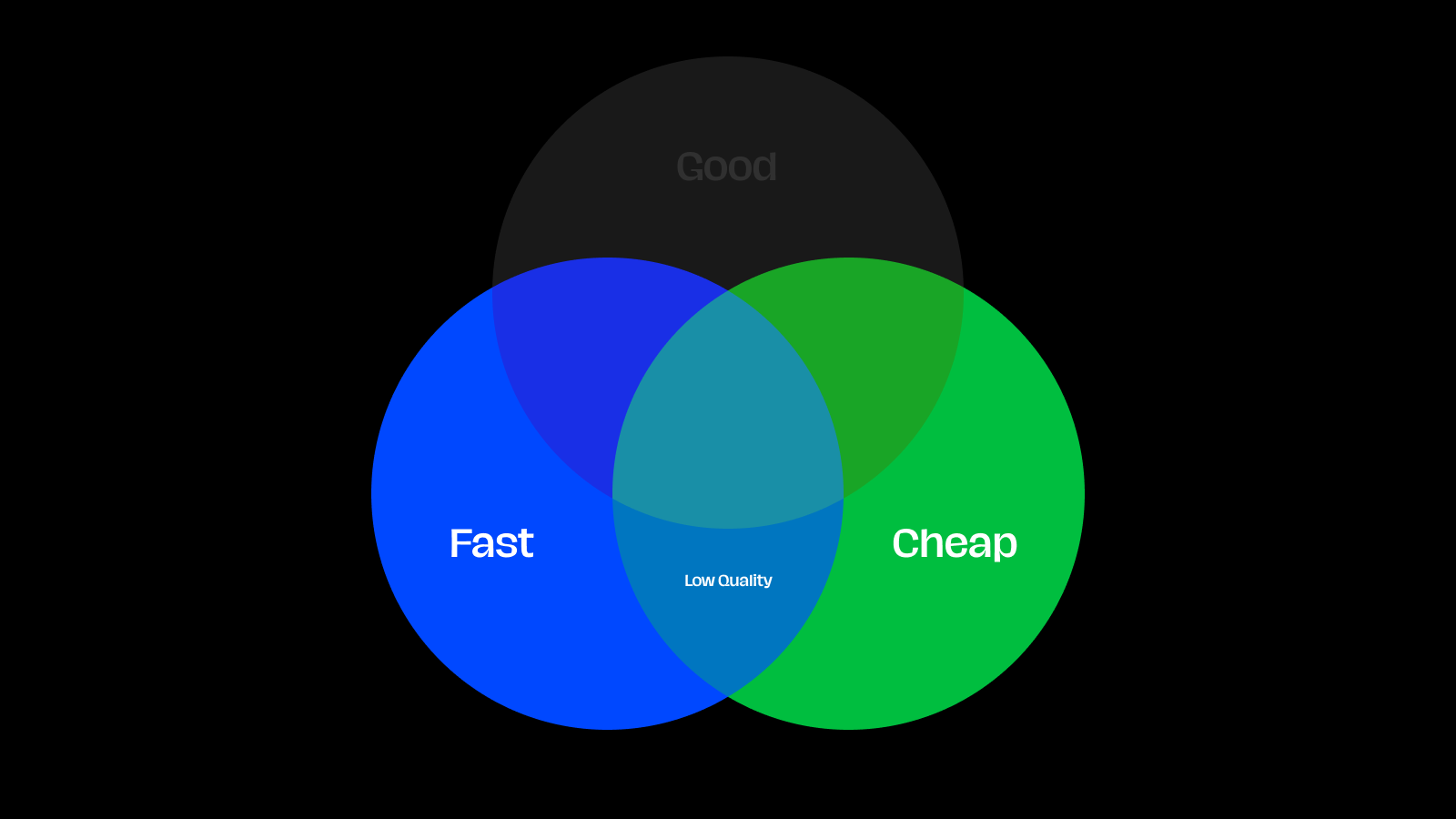
When I ran SuperFriendly, we were sometimes more expensive than clients wanted to pay, so some would ask if we could staff a team of junior people or even supervised apprentices for them in return for pay less than they would for a more senior team.
The assumption here was that the work would be “lower quality” but they’d get fast and cheap. We usually turned down this option, because we knew it would often mean slow and cheap, which is hard to deliver even if the client asked for it.
So how can this version be viable? The key here is not to be low quality, but lower quality. Lower than what? Many think it’s to be lower than the industry standard, but that’s usually unacceptable to customers. What many have figured out is that you can have a secondary service offering that’s faster and cheaper than your main service offering, which allows you to deliver an acceptable “lower quality” to a customer. Rather than thinking about is as “low quality,” it’s helped me to reframe it as “good enough.”
Fast food is a perfect example. I play basketball once or twice each week for 2-3 hours, often burning up to 2,000 calories. My typical recovery meal is a plate of rice, salmon, and broccoli or green beans; it has the carbs to replenish glycogen stores and the protein to repair broken-down muscle. But sometimes I play basketball an hour away from home. I can't wait an hour to get home to eat. So I go to McDonald’s or Taco Bell. It’s not my preferred meal, but it’s fast, cheap, and good enough.
Good, Fast, and Cheap: You Wish
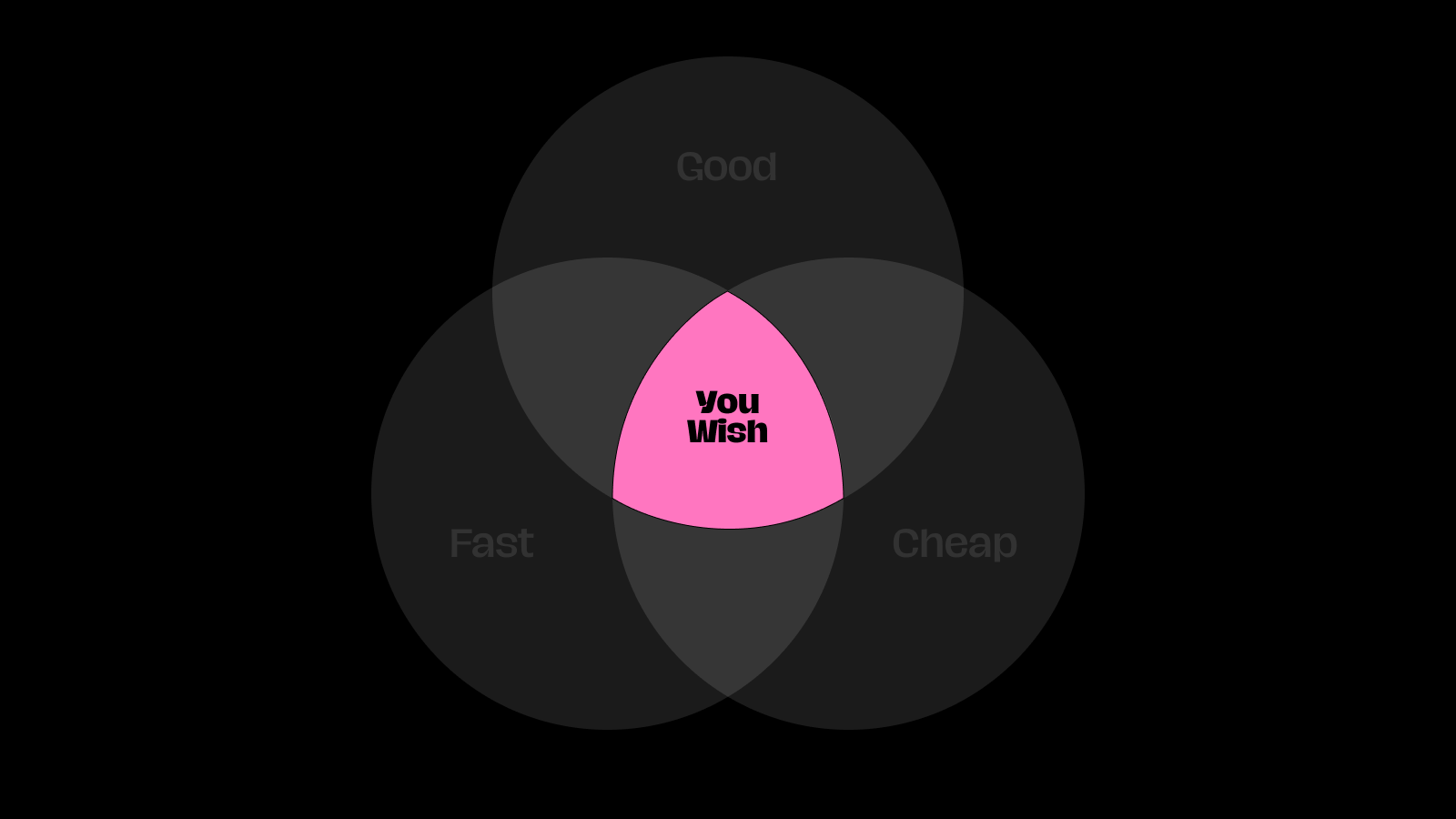
The general expectation—one that’s led to this iron triangle concept—is that you just can’t have good, fast, and cheap. That’s why people are rightly skeptical about anything that promises it, despite how alluring it is.
That explains the pushback against the growing popularity of design subscription agencies, because they seem to promise good, fast, and cheap:
- If it’s truly good and fast, why sell it cheap? Is that the sign of a halfwitted founder? Or maybe they’re so altruistic that they don’t mind leaving money on the table?
- If it’s truly fast and cheap, can you really expect the quality to be high?
- If it’s truly good and cheap, wouldn’t everyone sign up? And if that’s true, wouldn’t it be slow?
That’s just one example of why the common mantra here is that you can only pick two.
But there’s a big assumption here: that the only three desirable qualities are “good,” “fast,” and “cheap.” If we reframe all of the qualities as desirable, there are a few more combinations that really do allow you to pick three.
Good + Expensive + Slow

My favorite restaurant in the world is Royal Sushi in Philly. The food is astonishingly delicious, it’s super expensive, and it took me 3 years to get a reservation. Almost everyone that eats there has the same experience. Chef Jesse Ito has been running it for years and is booked long into the future. Sounds like a great business to me.
Could you run a freelance practice or an agency that puts out the highest quality work, charges premium prices, and has a line of clients waiting years to work with you? Many people have.
Fast + Expensive + Low Quality
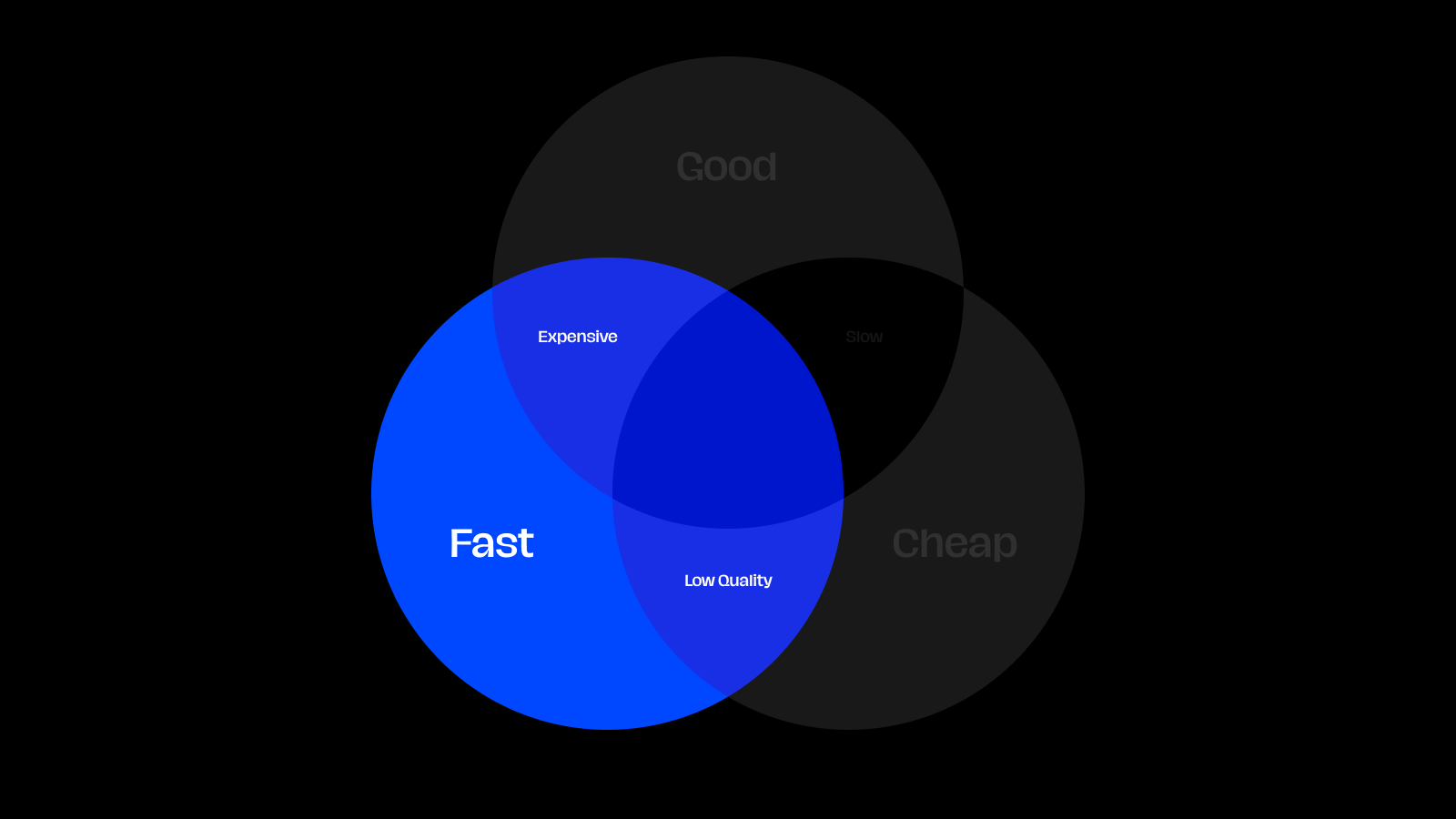
I’ve done a few projects like this over the years. A founder typically gets in touch with some kind of emergency:
- They have a big pitch tomorrow and need some comps made or the deck designed
- They’re launching something at the end of the week and could use some marketing materials, some final pizazz, or a last minute fix
- They just spent a lot of money on another designer whose work just doesn’t cut it and they need someone to fix it before, say, engineers start building.
I usually offer something like, “I can give you a day of work. No guarantee about what I can finish, but I’ll do my best.” Usually, the customer trusts me enough to believe that whatever I produce will be better than what they currently have and/or me not doing it. I charge an astronomical price for the rush, they wire the money same-day, and we’re off to the races. It’s never my best work, but they (hopefully) never expected it to be.
The common factor is a short deadline. It’s not that they want it fast; they actually need it fast.
Cheap + Low Quality + Slow
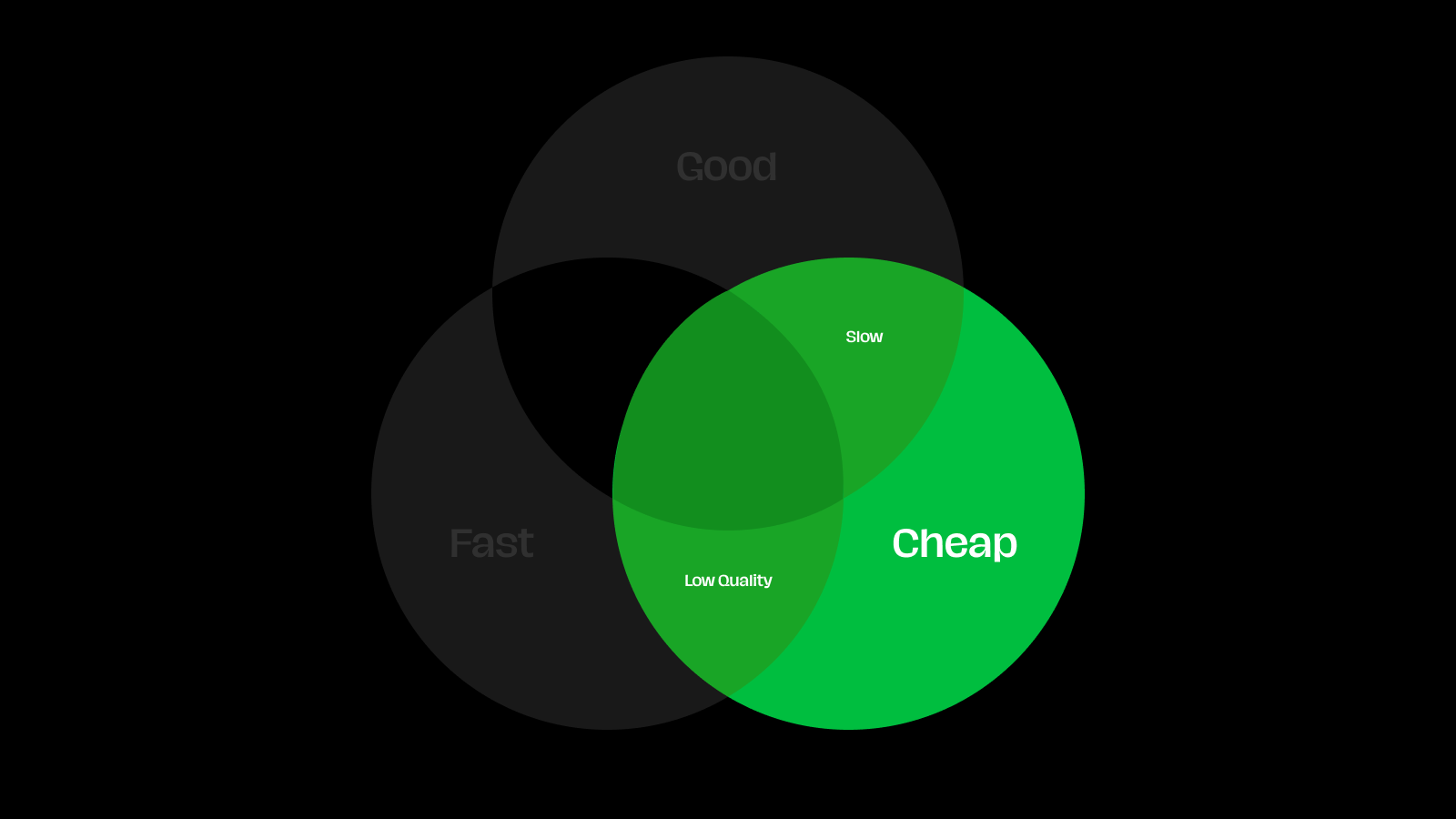
I think this is the most difficult version to sell, but who says you have to sell it? This model fits the “free“ part of “full price or free.”
Which model should you pick?
I recommend you pick on a project-by-project basis, rather than choosing one to base an entire business around. I’ve done all of these versions in my career and business! Some examples:
- Good + Fast: this is the default I strive for in all of my work.
- Good + Cheap: my default when I do favors. I did some branding and website work for my dad’s new business for free. If it were a Good + Fast project, I would have done it in a week. Because it was a Good + Cheap project, I took 3 months to do it.
- Fast + Cheap: great for MVPs (minimum viable products). When I’m testing something, I give myself a lot of permission to not worry about the quality of it.
- Good + Expensive + Slow: I don’t have a lot of space right now to do 1:1 coaching, but lots of people ask me to. So, I have a pretty decent-sized waiting list, and the few people I’m doing this with are paying a pretty penny for it.
- Fast + Expensive + Low Quality: rush jobs based on a real rush.
- Cheap + Low Quality + Slow: I use this model when I’m learning a new skill. I wanted to try adding photography as a service with one of my clients. I told them I’d do it for free just to say that i did it, and I set expectations that it might not be that good and I might be slow to deliver it. I also convinced them that it wouldn’t at all impact them negatively.
Do you have a favorite model? How do you use one or more of these in your work? Reply and let me know.
Read Next
Don’t Judge a Book By Its Timestamp
Join 66,800+ subscribers to the weekly Dan Mall Teaches newsletter. I promise to keep my communication light and valuable!